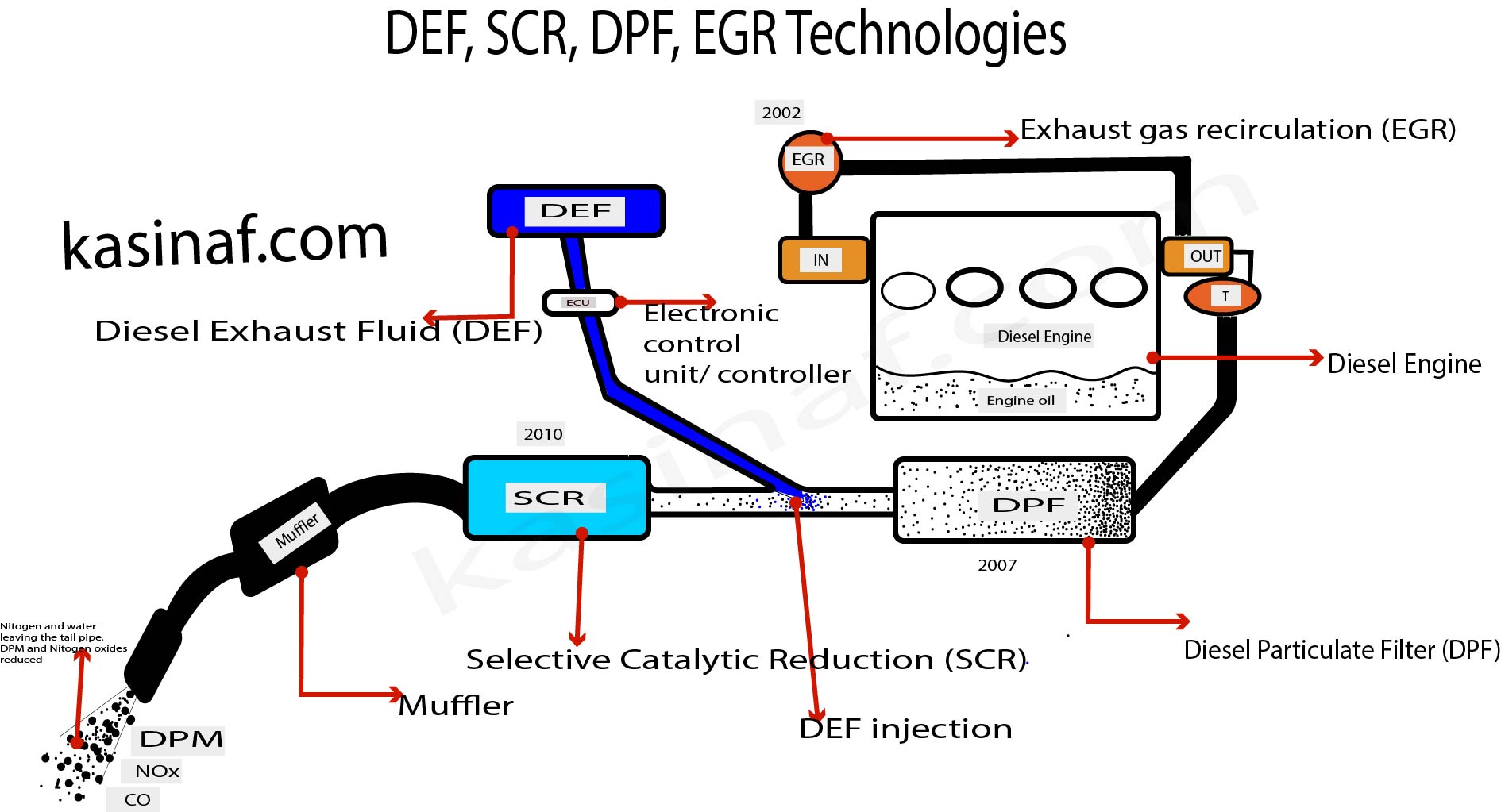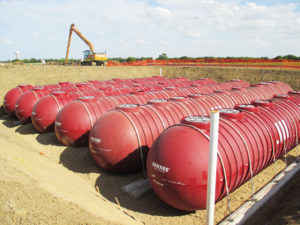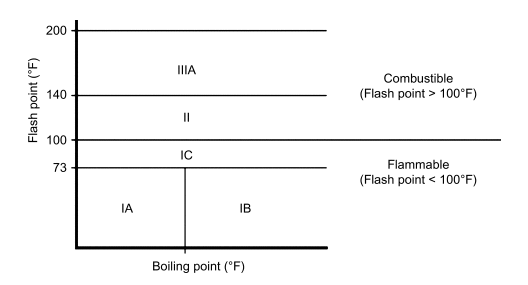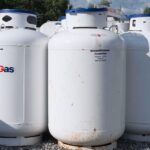The primary monitoring system used at most facilities for aboveground or underground storage tanks is the UST (Underground Storage Tank) monitoring system. This system is specifically designed to detect potential leaks in the tank and provide important information about the fuel levels and other relevant parameters.

A UST monitoring system operates by continuously tracking the fuel levels within the storage tank over a period of time. By monitoring the fuel levels, it can determine if there are any significant changes that might indicate a leak in the tank. This detection method is crucial for ensuring the safety and integrity of the storage tank system.
In addition to leak detection, UST monitoring systems offer various other monitoring capabilities. These include providing measurements of fuel level, volume, and temperature, as well as water level and volume within the tank. The system can also generate high and low fuel level warnings, alerting operators to any potential issues.
Many modern UST monitoring systems are designed to monitor not only the tank itself but also other components such as double-wall tanks, double-wall lines, and pressurized piping. This comprehensive monitoring helps to ensure that the entire fuel storage system is being effectively monitored for any signs of leaks or abnormalities.
Furthermore, UST monitoring systems often come equipped with remote communication capabilities. This allows for real-time access to the monitoring data from a remote location, providing convenient and efficient monitoring and management of the tank system. These systems may also be referred to as fuel management systems, automatic tank gauges, or leak detection systems due to their multifunctional nature.
In summary, the UST monitoring system is the primary monitoring system used at most facilities for underground or aboveground storage tanks. It tracks fuel levels over time, detects potential leaks, provides measurements of various parameters, and offers remote communication capabilities. By utilizing this system, facility operators can effectively manage and ensure the safety and compliance of their storage tank systems.
why do tank owners need UST monitoring system (primary monitoring system at facilities )
Tank owners require a tank monitoring system, such as an Automatic Tank Gauge (ATG), for several crucial reasons:
Regulatory Requirements:
Tank owners must comply with state regulations that often mandate tank and line tightness testing. These regulations are in place to ensure the safety of the environment and prevent leaks or spills that can contaminate soil and water. An ATG is a valuable tool in meeting these regulatory requirements. It continuously monitors the tank for leaks or breaches in tank integrity, allowing for prompt detection and reporting. By having an ATG in place, tank owners can demonstrate their commitment to environmental protection and regulatory compliance.
Product Management:
ATGs provide tank owners with accurate and real-time information about the levels of product within the tank. This information is vital for effective product management. Instead of relying on manual methods like sticking a tank to measure its volume, ATGs offer a quick and precise way to assess the current product level. This not only simplifies day-to-day operations but also ensures that tanks are always adequately stocked, preventing costly disruptions in service due to fuel shortages.
Leak Detection:
Leak detection is a critical aspect of tank management. Leaks can lead to environmental damage, financial losses, and damage to a tank owner’s reputation. ATGs are equipped with sophisticated sensors that can detect even small leaks, which might go unnoticed during manual inspections. By continuously monitoring for leaks, ATGs can provide early warnings and minimize the potential consequences of a leak, such as soil and water contamination. This proactive approach to leak detection is essential for protecting the environment and avoiding regulatory fines.
Furthermore, ATGs offer detailed reports on product delivery and dispensing, which helps with accurate fuel inventories. This, in turn, simplifies the reconciliation of product usage or sales. The elimination of manual measurements and calculations saves time and reduces the likelihood of errors in inventory management.
In summary, a tank monitoring system, particularly an ATG, is an indispensable tool for tank owners due to its ability to ensure regulatory compliance, facilitate efficient product management, and provide early leak detection, ultimately safeguarding the environment, reducing operational costs, and maintaining a positive reputation within the industry.
How the UST monitoring system at facilities works?

A fuel tank monitoring system plays a critical role in efficiently managing fuel storage tanks, whether they are aboveground or underground. It employs a combination of specialized probes, sensors, and sump detection mechanisms to ensure accurate fuel level measurement, monitor for leaks, and provide early alerts. Let’s explore how these components work together in the process

Magnetostrictive Probe:
- The heart of the system is often the magnetostrictive probe, which is permanently mounted in a 4-inch opening at the tank top. It typically consists of two floats that are used to measure both fuel and water levels within the tank.
- A pulse is sent to one of the floats, and the time it takes for the pulse to return to the head of the probe is measured. This measurement is incredibly precise, allowing for accurate readings down to 1/1000th of an inch.
- importantly, the magnetostrictive probe is also capable of adjusting for temperature changes in the fluid. This is essential because the tank’s volume changes as it expands and contracts with surface temperature fluctuations. Accurate compensation for these variations ensures consistent product readings.

Flexible Probe:
- Aboveground tanks larger than 20 feet tall typically use flexible probes. These probes can monitor tanks that are up to 70 feet in height and consist of a weight, water float, and product float. They function in a manner similar to the magnetostrictive probe but are specially designed for tall tanks.
Annular or Interstitial Space Sensors:
- Annular or interstitial space sensors are installed between the inner and outer walls of the tank and play a crucial role in leak detection. Three types of annular space monitoring are commonly used:
- Brine or glycol-filled annular: A dual float reservoir switch measures the rise and fall of brine or glycol, and any change in level indicates a potential leak.
- Steel tank annular: Float sensors are used in this space to detect the presence of fluid.
- Fiberglass dry annular space: A float or optical switch is used to detect the presence of fluid, triggering an alarm when a leak is suspected.


ATG console
A console is typically located inside the facility building, and can include a display, a keypad, a printer, status lights, and a beeper that signals alarm conditions. An ATG system may also be connected directly to a computer.

Note
The single biggest problem associated with using ATG for monthly release detection is OPERATORS IGNORING ALARMS!!! Alarms are annoying for a reason – the ATG is trying to alert the operator. Not all alarms are due to leaks, but ignoring any alarm defeats the purpose of having an ATG. Large leaks have gone undetected when operators either ignored an alarm or turned the ATG off to get rid of the annoying “beeping” sound.
Sumps:
Sumps serve as an integral component of leak detection and prevention in both aboveground and underground storage tank systems. These are liquid-tight containers typically made of materials like fiberglass or polyethylene.
Dispensers have a sump located below them to contain any potential leaks. In underground tanks, a sump is also located at the tank’s top.
The piping between the tank and dispenser is double-walled, and any leaks in the primary wall will be contained and directed to either the underground tank sump or the dispenser sump.
Float sensors installed in these sumps will trigger an alarm and notify the tank owner of a potential leak, ensuring that prompt action can be taken to prevent environmental damage and comply with regulatory requirements.

Monthly Automatic Tank Gauging Leak Tests
When an ATG is used as the monthly leak detection method, the tank must PASS a test that can detect a 0.2 gallon per hour (gph) leak at least once every 30 days. A 0.2 gph leak rate is equivalent to about two cans of soda every hour. Detecting a fuel level change that amounts to two cans of soda leaking from an 8,000- or 10,000-gallon tank requires a very accurate measurement of fuel levels and temperatures. Petroleum, especially gasoline, expands and contracts substantially with temperature, so the fuel temperature must be monitored by the ATG system very closely to get an accurate test. The temperature of fuel being delivered is most often different from the temperature of the fuel in the UST. Therefore, after a delivery, the fuel temperature inside a tank changes fairly rapidly. An ATG will not get a good test result for approximately 6 to 12 hours after a delivery until the fuel temperature has had time to stabilize.
Types of ATG tank tests:
Periodic Test.
The tank must be shut down for several hours, during which time there should be no dispensing or delivery of fuel. Most periodic tests are done overnight. If the volume change is too great, the test fails. If product is dispensed in the middle of the test, the test either fails or is invalid. The periodic test approach is not workable when a tank facility is open 24 hours a day. •
Continuous Test.
The ATG monitors the fuel level for periods of at least 15 to 20 minutes between customers, when a tank is idle. The ATG gathers and stores product-level data in its memory during these quiet intervals. If fuel dispensing starts, the data gathering is interrupted. The ATG then waits for another quiet period to gather more data. It keeps doing this until there is sufficient data to conclude that the tank is either tight or leaking.

In summary, a fuel tank monitoring system combines various sensors and probes to accurately measure fuel levels, monitor for potential leaks in the tank and the interstitial space, and provide early alerts through sump detection mechanisms. This comprehensive approach ensures the safe and efficient operation of fuel storage systems, protecting the environment and minimizing operational disruptions













